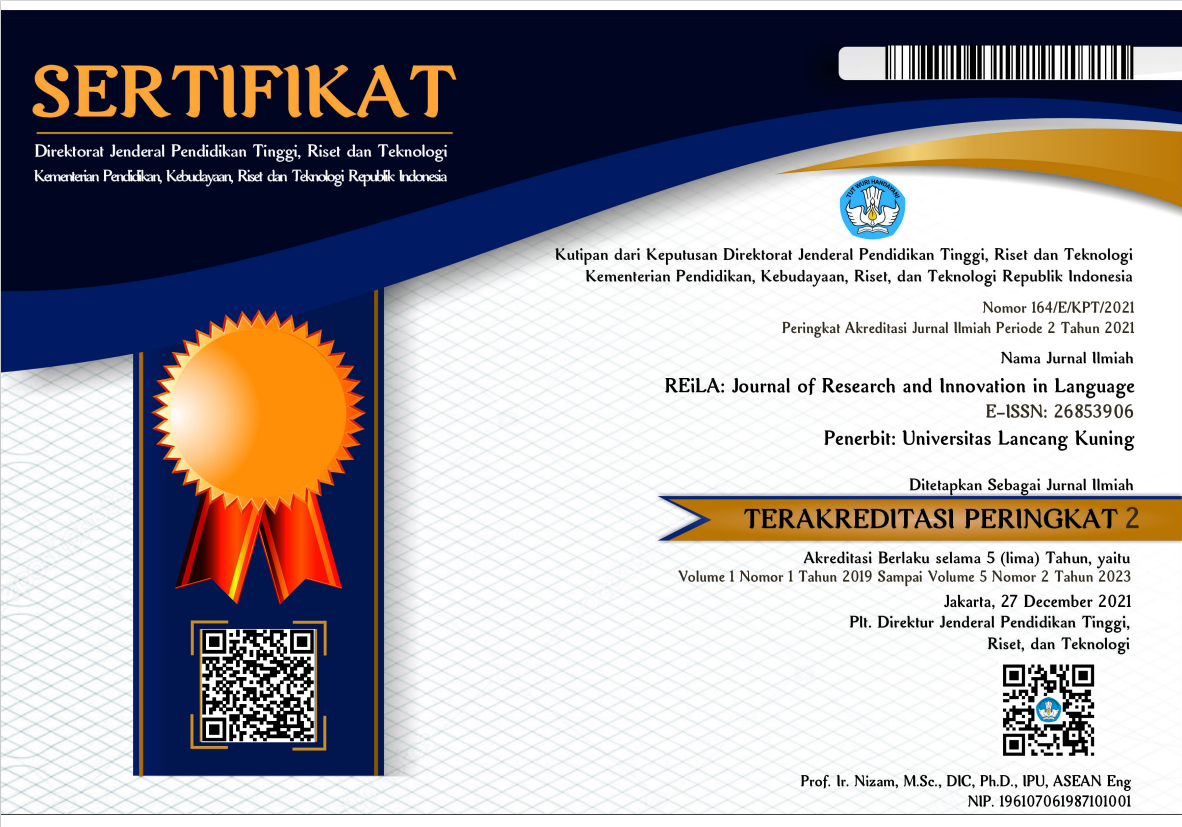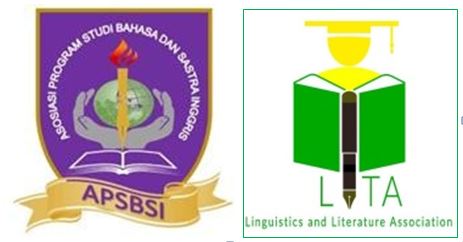Levels of Affixation in the Acquisition of English Morphology: A Review of Selected Paper
Abstract
In considering word formation in language development, there appear to be two central issues which can broadly be characterized as questions relating to (i) productivity, and (ii) constraints. This paper reviews one of the renowned articles which involving the theory of level-ordering that has three levels within the lexicon, children, recognize high-frequency words than low-frequency words written by Peter Gordon (1989), entitled "Levels of Affixation in the Acquisition of English Morphology." This study has three untimed lexical-decision experiments which were carried out with 5- through 9-year-olds of native speakers of English and found general support for a systematic relation between productivity and level assignment. The aim of this paper is to make sure the readers would understand what the article's researcher try to explain about the word-formation such as stem, the stem which add affixes of Level 1, stem which adds affixes of Level 2, and stem which add affixes of Level 3. Moreover, this article's references are accurate (valid) and well-argued. This article is highly recommended for word formation in language development because the researcher stated that children might have a significant part in this process. Therefore, this paper seen the word-formation will be rich in language development depends on how often people actively create words, for example, by combining stems and affixes in much the same way that they generate sentences.
Downloads
References
Allen, M. (1978). Morphological investigations. Unpublished doctoral dissertation, Department of Linguistics, University of Connecticut, Storm, Conn.
Anderson, S. R. (1982). Where's morphology? Linguistic Inquiry, 13, 571-612.
Aronoff, M. (1976). Word formation in generative grammar. Linguistic Inquiry Monograph, Vol. 1, Cambridge, MA: MIT Press.
Berko, J. (1958). The child’s learning of English morphology. Word, 14, 150-177.
Bradley, D. C. (1979). Lexical representation of derivational relation. In M. Aronoff and M. L. Kean (Eds.). Juncture. Cambridge, MA: MIT Press.
Carstairs-McCarthy, A. (2017). Introduction to English Morphology: Words and their Structure. Edinburgh University Press.
Chomsky, N., & HALLE. M. (1968). The sound pattern of English. The Hague: Mouton.
Clark, E. V. (1981). Lexical innovations: How children learn to create new words. In W. Deutsch (Ed.). The child's construction of language. New York: Academic Press.
Clark, E. V. (1982). The young word maker: A case study of innovation in the child’s lexicon. In E. Wanner & L. R. Gleitman (Eds.) Language acquisition: The state of the art. Cambridge, England: Cambridge University Press.
Clark, E. V., & Clark, H. H. (1979). When nouns surface as verbs. Language, 5.5, 767-811.
Clark, E. V., & Hecht, B. F. (1982). Learning to coin agent and instrument nouns. Cognition, 12, l-24.
Cutler, A. (1983). Lexical complexity and sentence processing. In G. B. Flores d'Arcais and R. J. Jarvella (Eds.). The process of language understanding. New York: Wiley.
Francis, W. N., & Kljcera, H. (1982). Frequency analysis of English usage: Lexicon and grammar. Boston, MA: Houghton Mifflin.
Gordon, P. (1985). Level-ordering in lexical development. Cognition, 21, 73-93.
Hall, W. S., Nagy, W. E., & Linn, R. (1984). Spoken words: Effects of the situation and social group on oral word usage and frequency. Hillsdale, NJ: Erlbaum.
Jia, G., & Fuse, A. (2007). Acquisition of English grammatical morphology by native Mandarin-speaking children and adolescents: Age-related differences. Journal of Speech, Language, and Hearing Research.
Kiparsky, P. (1982). From cyclic phonology to lexical phonology. In H. van der Hulst and N. Smith (Eds.). The structure of phonological representations. Dordrecht: Foris.
Kiparsky, P. (1983). Word-formation and the lexicon. In F. Ingemann (Ed.) Proceedings of the 1982 Mid-America Linguistics Conference. University of Kansas, Lawrence, Kansas.
Moe, A. J., Hopkins, C. J., & Rush, R. T. (1982). The vocabulary of first-grade children. Springfield, IL: Thomas.
Paradis, J. (2010). Bilingual children's acquisition of English verb morphology: Effects of language exposure, structure complexity, and task type. Language Learning, 60(3), 651-680.
Sebüktekin, H. I. (2017). Turkish-English contrastive analysis: Turkish morphology and corresponding English structures (Vol. 84). Walter de Gruyter GmbH & Co KG.
Siegel, D. (1977). Topics in English morphology. Unpublished doctoral dissertation, Department of Linguistics, MIT, Cambridge, MA.
Slobin, D. I. (Ed.). (1985). The cross-linguistic study of language acquisition. Vo/. 1: The data. Hillsdale. NJ: Erlbaum.
Taft, M. (1979). Recognition of affixed words and the word frequency effect. Memory and Cognition, 7, 263-272.
Tyler, A. E. (1986). Acquisition and use of English derivational morphology: An experimental investigation. Unpublished PhD dissertation, Department of Linguistics, University of Iowa.
Walsh, L. (1984). Possible words. Paper presented at the M.I.T. Morphology Workshop, Jan. 26-27, 1983, Cambridge, MA.










